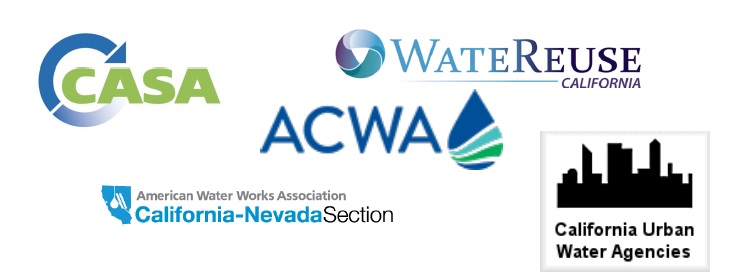On June 24th, WateReuse California submitted comments on the Water Board’s draft Direct Potable Reuse regulations. The coalition letter included ACWA, CUWA, CA-NV Section of AWWA and CASA. WRCA developed these comments after holding a webcast and panel discussion in April to review the draft regulations and solicit comments.
A DPR Working Group was formed that assisted in the development of the final letter. In 2017 WRCA and California Coastkeepers Alliance co-sponsored AB 574 (Quirk), which requires the Water Board to develop DPR regulations by 2023.
Note: The State Water Board requested stakeholder feedback on the Addendum. The public comment period closed on June 25th.
From the comment letter…
Raw Water Augmentation (RWA) and Treated Water Augmentation (TWA)
- DDW should consider a framework that balances the treatment, monitoring, and/or operational requirements to account for RWA benefits. This framework could draw off of the “toolbox” approach used in the Long Term 2 Enhanced Surface Water Treatment Rule that provides flexibility to take advantage of the site-specific elements that are available to a project.
- We recommend that DDW develop criteria to identify the conditions that trigger revalidation studies and not make this a blanket requirement for all RWA water treatment plants. Requiring such studies of all surface water treatment plants seeking pathogen credit places an additional, high burden on RWA and may drive project sponsors to actively exclude their use. Greater clarity on the crediting of other barriers—such as small reservoirs and blending—would further help the industry consider and leverage the benefits of RWA.
Pathogen Control
- We request that DDW work with the new DPR Expert Panel to identify the multiple layers of conservatism in the pathogen requirements and define the appropriate levels to achieve DDW’s daily risk goal for both RWA and TWA.
Chemical Control
- We believe it would provide greater flexibility if DDW defined the performance requirements that they are seeking rather than requiring specific design criteria—e.g., ozone to TOC ratio or empty bed contact times (§64669.50(c)). For example, the IPR regulations require that advanced oxidation achieve 0.5-log reduction of 1,4-dioxane (a performance requirement) without specifying the technology
(e.g., UV or ozone) or their required doses. A similar performance-based requirement for chemical control would make it easier to assess the equivalence of alternative options. We support performance requirements, such as the 1-log reduction of formaldehyde (§64669.50(c)), and ask DDW to specify any other requirements that would define equivalence for robust chemical control. - We suggest that DDW consider eliminating the 0.1 ppm TOC trigger while maintaining the remaining three triggers at their existing levels. project. Rather than reviewing the disparate results of quantitative risk assessments from multiple projects, the State Water
Board may be better served by enlisting their Recycled Water CEC Expert Panel to provide guidance on chemical monitoring for DPR projects. - Rather than reviewing the disparate results of quantitative risk assessments from multiple projects, the State Water Board may be better served by enlisting their Recycled Water CEC Expert Panel to provide guidance on chemical monitoring for DPR projects.
- We also oppose the requirement for online monitoring of the sewershed (§64669.40(d)(1)).
Technical, Managerial and Financial Capacity
- Given that water treatment plant operators have successfully protected public health using existing staffing and certifications, the presence of a new source water should not trigger the need for additional AWT5 certifications and 24/7 staffing requirements. These
onerous operational requirements will further disincentivize RWA in spite of the additional public health protection it can provide. We recommend that the requirement for onsite staffing at all facilities be re-evaluated, particularly at the drinking water and wastewater
treatment plant where we do not believe 24/7 onsite staffing is necessary.
Conclusion
- We appreciate the time, energy, and thoughtful consideration that was spent by DDW in preparing these draft regulations. We believe they will provide critical regulatory certainty for DPR projects in California. We ask that you consider the modifications above, which we believe will further improve these draft regulations.

